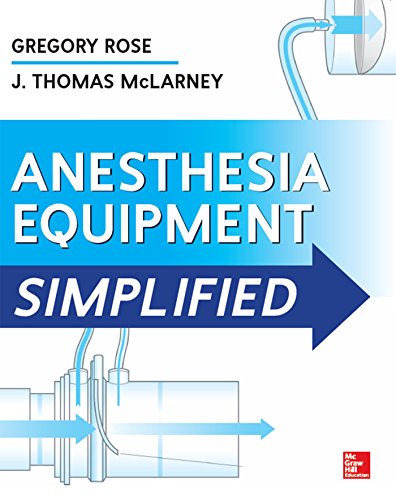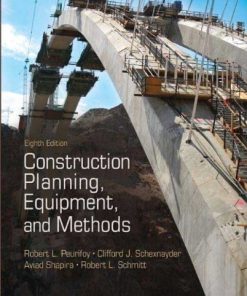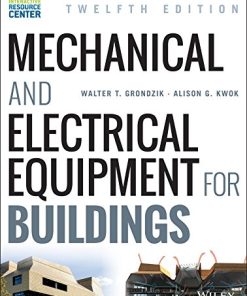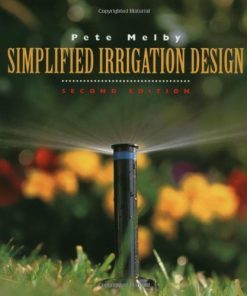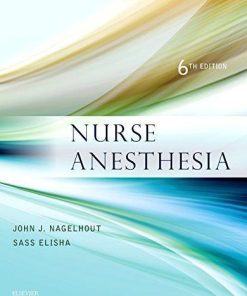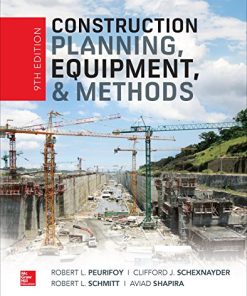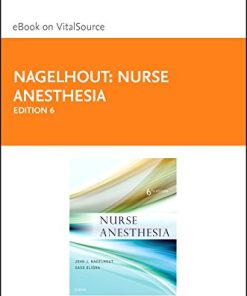Anesthesia Equipment Simplified 1st Edition, (Ebook PDF)
$50.00 Original price was: $50.00.$25.00Current price is: $25.00.
Anesthesia Equipment Simplified 1st Edition, (Ebook PDF) – Digital Instant Dowload.
Anesthesia Equipment Simplified 1st Edition, (Ebook PDF) – Digital Instant Dowload.
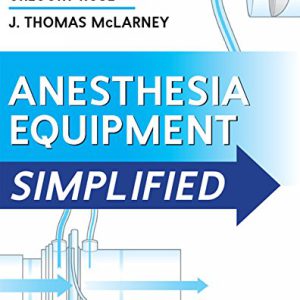
Product details:
- ISBN-10 : 0071805184
- ISBN-13 : 978-0071805186
- Author: Gregory Rose (Author)
The goal of Anesthesia Equipment Simplified is to provide the technical background necessary to ensure the safe and effective use of the basic equipment used by the anesthetist. Written in an enjoyable, conversational style, this unique text makes technical details easy to understand and remember.
Emphasizing clinical utility rather than academic discussion, Anesthesia Equipment Simplified clarifies every important aspect of anesthesia machines, monitoring equipment, and other key technologies in anesthesia practice and also includes detailed advice on how to troubleshoot and prevent malfunctions.
Table contents:
Chapter 1 Introduction
Chapter 2 Overview of Anesthesia Equipment
Purpose of an Anesthesia Machine
Main Purposes of an Anesthesia Machine
Generic Anesthesia Machine
Atypical Anesthesia Machines
Manufacturers of Anesthesia Machines
Anesthesia Monitoring
Conclusion
Reference
Chapter 3 Medical Gas Supply Systems
Oxygen
Nitrous Oxide
Medical Air
Medical Suction
Conclusion
Chapter 4 Pneumatic Systems
High-Pressure System
Intermediate-Pressure System
Conclusion
Chapter 5 Flowmeters and the Low-Pressure System
Low-Pressure System
Flowmeters and Their Parts
Hazards of Flowmeters
Common Gas Outlet
Auxiliary Flowmeter
Conclusion
Chapter 6 Vaporizers
Chemistry and Physics
Classification of Vaporizers
Hazards of Vaporizers
Desflurane Vaporizer
Aladin Cassette
Maquet Vaporizers
Future Vaporizers
Conclusion
Chapter 7 Circle Circuit
Parts of the Circle Circuit
Advantages of the Circle Circuit
Disadvantages of the Circle Circuit
Hazards of the Circle Circuit
Coaxial Circle Circuit
A Few Words About Nomenclature
Conclusion
Chapter 8 Anesthesia Machine Ventilators
Bellows Ventilator
Piston Drive
Fresh Gas Flow Compensation and Decoupling
Conclusion
Chapter 9 Carbon Dioxide Absorber
A Brief History
Design
Absorbents
Hazards of Carbon Dioxide Absorbers
Conclusion
Chapter 10 Scavenger System
Types of Systems
Interfaces
Hazards of Scavenger Systems
Conclusion
Chapter 11 Fail-Safe Systems
Cylinder Color
Pin Index Safety System
Diameter Index Safety System
Oxygen–Nitrous Oxide Fail-Safe Valve
Oxygen–Nitrous Oxide Proportioning Systems
Hazards of Fail-Safe Valves, ORMC, S-ORC, and Link-25
Conclusion
Chapter 12 Electrical Systems
Master Switch
Electrical Outlets
Circuit Breakers
Battery Backup
So What Works When All the Power is Gone?
Functions of a Standard Anesthesia Machine Not Needing Electricity to Function
What the Future Holds
Conclusion
Chapter 13 Anesthesia Machine Checkout
Standard Machine Checkout
Automated Machine Checkout
Conclusion
Reference
Chapter 14 Malignant Hyperthermia and the Anesthesia Machine
Suggested Readings
Chapter 15 Anesthesia Equipment for Magnetic Resonance Imaging
Ventilation
Source of Medical Gases
Monitoring
Intravenous Infusion Pumps
Conclusion
Chapter 16 Capnography and Gas Monitoring
A Brief History
Types and Technology
Disposable (Chemical) Capnometers
Oxygen Analyzers
Conclusion
Chapter 17 Pulse Oximetry
Physics
System Design
Clinical Aspects
Problems
Conclusion
Chapter 18 Hemodynamic Monitoring
Invasive Blood Pressure Monitoring
Noninvasive Blood Pressure Monitoring
Accuracy
Conclusion
Chapter 19 Bag Valve Mask and Mapleson Circuits
Bag Valve Mask
Mapleson Circuits
Conclusion
Suggested Reading
Chapter 20 Warming Devices and Temperature Monitoring
Methods of Perioperative Heat Loss
Methods of Patient Warming
Methods of Intravenous Fluid Warming
Temperature Monitoring
Conclusion
Chapter 21 Electricity and Electrical Safety in the Operating Room
Basics
Risk of Shock
Operating Room Electrical Design
Conclusion
Chapter 22 New Developments in Anesthesia Equipment
The Future is Now
Anesthesia Workstation
Not Anytime Soon
You may also like…
Medicine - Anesthesiology and Intensive Care
Medicine & Health Science
Pocket Anesthesia (Pocket Notebook Series) 3rd Edition, (Ebook PDF)
Uncategorized
Uncategorized
Uncategorized


